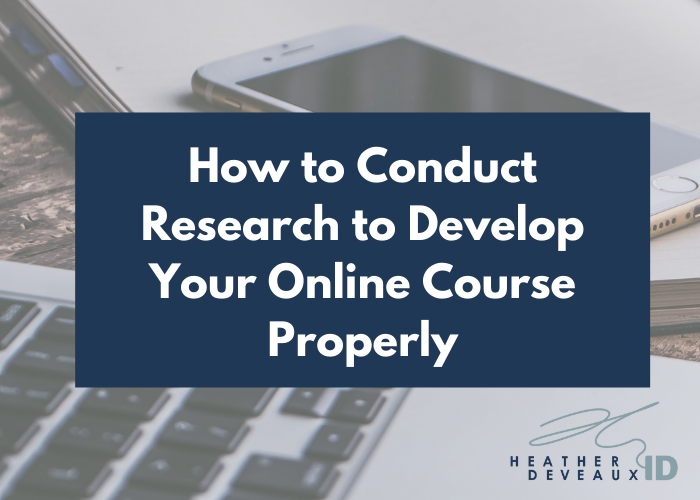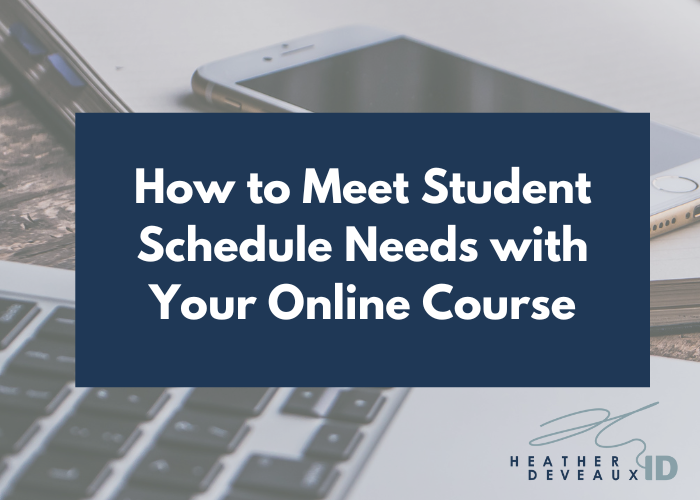How to Incorporate Evidence-Based Research into Your Online Course without Being a Bore
Evidence-based research sounds stuffy. And it can be. Especially when you try to incorporate it into your online course without understanding why it’s needed in the first place. Many subject matter experts lean into evidence or research as a way to help solidify their own experiences. And that’s not wrong: it’s important to understand and gauge our experiences through a variety of lenses that help us make sense of ourselves. But when it comes to teaching others what you know, ensuring you don’t overdo it on the research front is important.
In this article, we’re talking about how to incorporate evidence-based research into your online course without being a bore. Because nobody is sitting around reading peer-reviewed articles for fun. There’s an art to taking the most relevant parts of often dry, prescriptive research to turn it into something people can understand. More importantly, it takes a certain skill (and a series of questions) to present that information in a way that doesn’t make people want to roll their eyes.
Start With What You Know
When it comes to creating online courses, some subject matter experts are quick to dive into the research phase to gather thoughts, ideas, frameworks, and concepts – evidence – that there is a need for this information.

Before you even start, you might be seeking validation from books, blogs, and even academic materials. This is common, but not always necessary. When I work with a client to create an online course for them, I always start with their experience first. It’s important that I understand their baseline and that I have an idea of just how deep that experience runs. That’s because when I build courses, I work to focus on the client’s expertise: nobody ever read a peer-reviewed article in academia and thought to themselves, “wow, this would make a great online course.” So we want to focus on the expert’s knowledge first, to suss out the good stuff.
Pair Your Experience with the Research The Right Way
You’re unique. There’s no doubt about it. But you might be feeling a little lackluster, especially in today’s noisy internet economy. You might be feeling as though your experience alone isn’t enough to create a meaningful online course. And to that I would say – it depends. You may very well have the experience to sit down and create your online course from scratch. You may not need to source or cite any other references to make your point. But you probably want to do some research. For your own need to validate your experience and to help your students. You want them to see that your experience is aligned with what’s happening in the market.
When you set out to create an online course – with me or otherwise – you’ll be faced with some tough decisions. Asking yourself about what you know and how you came to acquire such knowledge is tough. It’s par for the course, I’m afraid, to have to question what you think you know. You need to become skilled in presenting your experiences to others in a meaningful way. And when I say “meaningful”, I mean in a way that helps others learn. And when I say “learn”, I mean create a situation where people can DO things they couldn’t do before. Information drives action. Or, at least, it should. In any online course, anyway. Information for the sake of information is dreadful. We don’t need to know more things…we need to be able to do more things.
Teach People To Do More or Different Things
So then, if the goal is to help students transform their lives with your online course, research certainly isn’t going to get them there. People don’t change habits based on research. They change habits, make new connections, try new things, and put themselves out there when they know the steps to take. Evidence-based research comes into play when you want to illustrate a point for your students.
For example, maybe you want to create an online course that helps small business owners improve their marketing. Sounds great – everyone is doing it. Many – MANY – are failing. Why? Because inexperienced course creators focus too much on their own subject matter expertise and not nearly enough on the parts of their experiences that can help others see a new way forward is possible. And they give too much information. So much information that people get tired of reading. But when you ask someone to take an action, and you provide evidence that the action can be taken successfully, through the use of a case study or perhaps a demonstration, then the student is more likely to take that action. Or at least, attempt to take the action.
And what do we know about taking action? Even when we fail, we learn something. We grow and change through experience. And experience requires us to try new things. At the very least, it requires us to show up, to witness, to see for ourselves that something is possible. So when you’re creating an online course, using evidence-based research doesn’t always mean citing academic articles. It can mean that you simply provide evidence (of any kind) to provide clarity and confirm that the action being asked of your student is possible.

Further Reading is an Option But Not The Star of the Show, Even in Evidence-Based Courses
When it comes to creating evidence-based online courses, your first instinct might be to ensure that you spend weeks, maybe even months, researching what others have done, said, or presented in your field. But this isn’t a university. And even if it is a course for a university, there’s a fine line between just stuffing a reading list down someone’s throat thinking you’re adding value, and actually adding value.
If a reading list is a must, or you feel obligated to provide something that demonstrates the research you’ve prepared, then here’s how to do it in a way that ensures people will keep reading when the course is over.
Three Steps to Ensure Your Reading List Doesn’t Get Tossed Out
First, don’t assign readings. Assign action items associated with the readings. Attach a skill or task to each reading or piece of research to help the student take the information off the page.
Second, don’t give people a reading list after the course. Instead, distribute key reading or research throughout the course and tie it to a deliverable. When clients work with me to create online courses, we cut everything that doesn’t drive action. It’s hard for a subject matter expert to watch their hard-earned years fall to the wayside and not be the star of the show, but this isn’t about you. It’s about what you need to teach your students so they can succeed.
Finally, keep the list short: no more than 10 additional resources that have an action associated with them. Why 10? Because if these readings were so important, they would have made the cut. And they didn’t. But they might fill in a gap, continue a conversation, or provide insight and arguments that allow the student to take this work deeper. Optional is best. And if it’s optional, I can’t help but beg the necessity of taking the time to create it. But it’s your course, and you know your audience best.
Take Steps to Create an Evidence-Based Online Course That Provokes Action
Let me guide you through the decisions associated with using evidence-based research to create courses so you don’t get lost in the weeds. Book a call with me now to learn more about how I help you cut through the noise and make practical, action-based decisions for your new online course.
I used a simple, four-step system that turns your expertise into action-based materials that transform lives. Grab my course creation guide here for more ways to bring your ideas to life.







